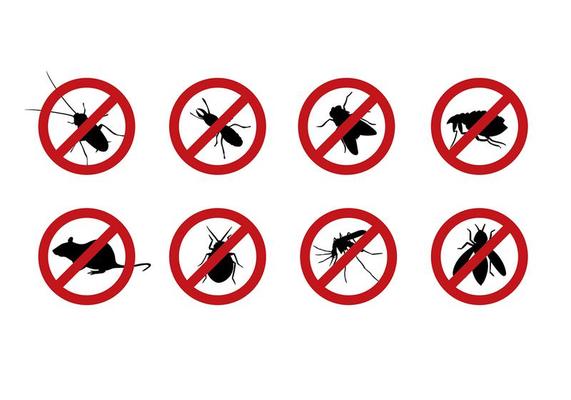Portland Exterminators A1 for Bed Bugs - Trusted Regional Professionals
Wiki Article
Effective Parasite Control Solutions: An In-Depth Check Out Elimination Techniques and Prevention Procedures
In the realm of insect control services, the successful administration of infestations requires a thorough strategy that incorporates numerous strategies and actions for both removal and avoidance. From Integrated Parasite Administration (IPM) strategies that prioritize lasting solutions to chemical extermination methods developed for targeted removal, the toolbox against bugs is large and complex.
Integrated Bug Monitoring (IPM) Techniques
Integrated Parasite Monitoring (IPM) Approaches incorporate a detailed approach to pest control that focuses on prevention, tracking, and control approaches to properly handle insect populations. By integrating different strategies, IPM intends to decrease the effect of insects while additionally minimizing the reliance on chemical pesticides. Prevention exists at the core of IPM, highlighting practices like correct hygiene, maintenance of hygiene, and securing access points to deter pests from infesting buildings. Tracking plays a crucial function in IPM by consistently determining and checking bug degrees to establish the ideal intervention thresholds. Control techniques in IPM prioritize the use of physical, biological, and social strategies prior to transforming to chemical treatments as a last hope. These methods include presenting all-natural predators, environment alteration, and using capturing tools to maintain bug populaces in check. Generally, IPM fosters a sustainable and ecologically mindful technique to pest monitoring, promoting long-term services that safeguard both human health and wellness and the environment.Chemical Elimination Methods
Chemical extermination strategies are generally employed in insect control solutions to successfully remove pest populations that pose a danger to human wellness and property. These techniques entail the usage of numerous chemical compounds specifically made to target and eliminate bugs such as pests, rats, and various other undesirable animals. The application of pesticides, insecticides, rodenticides, and various other chemical representatives is carefully regulated to make certain maximum effectiveness while minimizing dangers to people, pet dogs, and the environment.Among the key advantages of chemical elimination methods is their ability to provide quick and targeted outcomes, making them particularly valuable in instances of severe invasions or urgent bug control requirements - a1 portland pest control bed bugs. Nevertheless, it is necessary to emphasize the importance of correct handling, application, and disposal of these chemical items to avoid unintended harm
In addition, incorporated insect monitoring (IPM) techniques usually incorporate chemical extermination methods with various other approaches such as sanitation, environment alteration, and organic controls to create a sustainable and comprehensive parasite control technique. By incorporating chemical extermination strategies deliberately within an IPM structure, bug control solutions can efficiently manage insect populaces while reducing prospective risks to human health and the setting.
Organic Insect Control Techniques
Using natural killers and parasites to handle pest populations is a sustainable method recognized as organic insect control. This strategy harnesses the natural mechanisms of the ecosystem to control bug populaces without depending on artificial chemicals. One common organic control technique entails presenting all-natural opponents of the target bug varieties, such as ladybugs for aphid control or nematodes for termite infestations. These natural predators eat the parasites, assisting to keep their populaces in check.Another efficient biological control technique is using microbial insecticides. These are naturally taking place bacteria, such as infections, fungi, and bacteria, that especially target and infect certain pest varieties. By utilizing these microbial agents, pest populations can be properly decreased without triggering or damaging useful microorganisms harm to the setting.
Physical Pest Prevention Steps
Executing physical insect avoidance steps entails using obstacles and structural adjustments to prevent parasites from going into or infesting a building. Installing door moves, displays on windows, and sealing splits in the structure can aid prevent insects like insects and rats from acquiring accessibility inside your home.Another physical prevention procedure is the usage of obstacles like fencing to maintain you can look here bigger pests such as raccoons or deer away from the residential property. Mounting mesh or wire displays around gardens can secure plants from being damaged by insects. Correct waste monitoring, consisting of securing trash canisters with tight-fitting covers, is crucial in discouraging pests like rats, raccoons, and bugs. By implementing these physical parasite avoidance measures, residential property proprietors can significantly reduce the threat of parasite problems and the damage they can trigger.
Professional Bug Assessment Procedures
Carrying out systematic and complete parasite inspections is a basic element of professional bug monitoring procedures. Expert pest inspectors are educated to thoroughly take a look at buildings for indicators of invasions, determining pest species, access his comment is here points, and favorable conditions. The assessment process commonly starts with a comprehensive analysis of both the exterior and interior of the properties. This includes checking for parasite droppings, gnaw marks, nests, and any type of structural damages that may show insect task. In addition, examiners might utilize specialized tools such as wetness meters and borescopes to spot hidden infestations within walls or crawl rooms.
Conclusion
To conclude, efficient insect control services employ a variety of strategies, consisting of Integrated Parasite Management approaches, chemical elimination methods, biological controls, and physical avoidance steps. Specialist parasite assessment procedures play an important duty in recognizing and addressing pest pest control address problems in a timely manner. By applying a combination of these strategies, building owners can effectively prevent and take care of parasite problems.From Integrated Parasite Management (IPM) strategies that prioritize lasting options to chemical elimination techniques developed for targeted elimination, the arsenal against pests is large and multifaceted.Integrated Parasite Monitoring (IPM) Techniques encompass a detailed method to pest control that concentrates on prevention, monitoring, and control methods to efficiently handle pest populaces.Chemical extermination strategies are frequently used in parasite control services to properly eradicate bug populaces that present a threat to human health and home.Utilizing natural predators and parasites to manage insect populaces is a lasting technique understood as biological insect control.In verdict, effective parasite control solutions use a range of strategies, consisting of Integrated Insect Administration methods, chemical extermination techniques, biological controls, and physical prevention procedures.
Report this wiki page